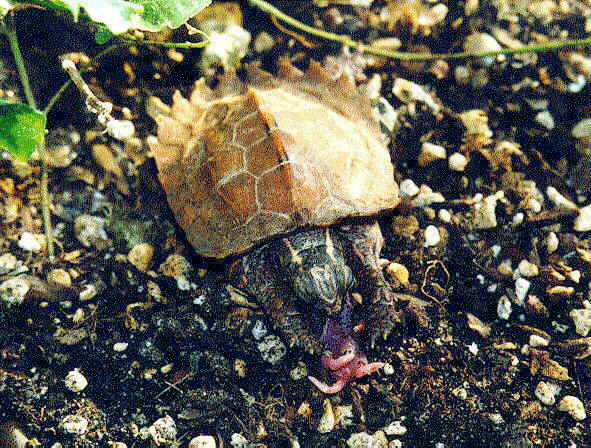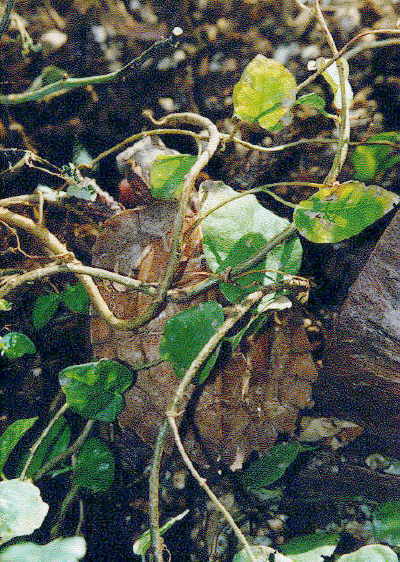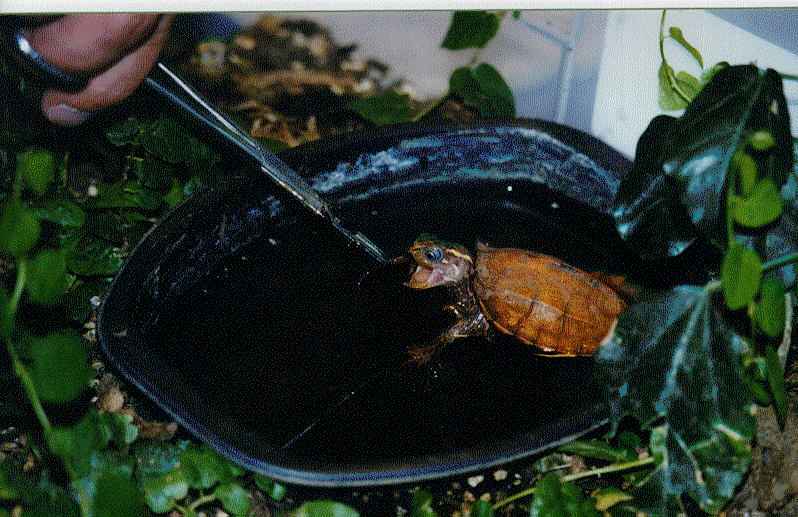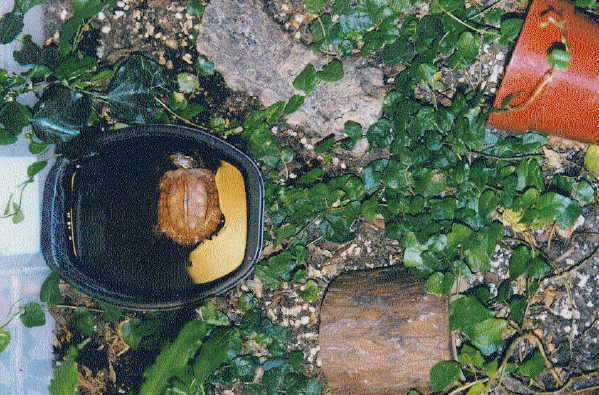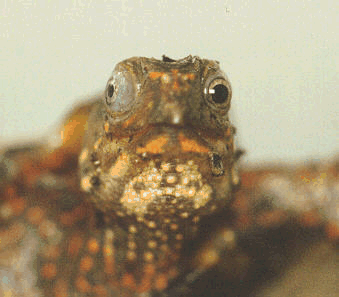
Melissa
Kaplan's
Herp Care Collection
Last updated
January 1, 2014
Photos of Tobago, a Vietnamese leaf turtle
©2000 Melissa Kaplan
The following photos were taken in March 2000 in Tobago's enclosure.
Click on the images to see them enlarged.
|
After running around the enclosure or dragging the mouse from his "pond" to dry land, Tobago sets to work eating. Using his front feet to hold the mouse and push, while biting down on it, he is able to tear it into bite-sized pieces. He eats snails the same way, using his feet to push at the shell, removing the snail from its shell. Worms and slugs are similarly treated, with the feet used to hold them down while he pulls his head away. |
|
|
Every so often, Tobago becomes a bit paranoid when it comes to his food...with his mice, to be precise. At these times, if I hover around the enclosure to watch him, or do a bit of maintenance (picking up dead leaves, crushed snail shells, etc.), he runs away, dragging the mouse under this plastron, trying to keep it away from me. What makes this most interesting is that he totally ignores me if it is snails. My omnivorous lizards don't worry that I will steal their food from them...I wonder if Tobago will eventually realize that I give, I do not take away. |
|
|
Here Tobago gets a worm. Because it has become so difficult to track a "free roaming" worm, he would get discouraged and not eat. By holding it for him, he has the time to focus on it and grab it - unless, of course, he is holding out for a mouse. When you click on this photo to see the enlarged version, you will see how clear and bright this, his good eye, is compared to his right eye. |
|
|
This photo of his Rubbermaid tub (21.5 x 15 x 5.5 in. / 54.6 x 38 x 14 cm inside dimension; US 7.6 gallons) was taken in late Spring 1999. Since then, the creeping fig got very straggly, the hibiscus got uprooted several times when Tobago tried burrowing under it, and in general things were looking rather dilapidated. I have since ripped it all out, replanted the hibiscus, added a couple of miniature rose bushes, and some thyme. The orange plastic flower pot is one of his favorite sleeping and hanging-out places. It is actually half-buried in the soil so it forms a cave snug enough to feel secure but large enough for him to comfortably turn around in. The piece of wood at the bottom of this view is a half-log, with space underneath to burrow into. He will use the long wood piece at the top of this photo to burrow under or parch on when eating. |
|
|
Copyright © 2000 by Melissa Kaplan |
This photo of Tobago's two eyes clearly shows the difference in color, overall size, and size of the pupil. Photo taken 09/00. |
Related Articles
Captive Propagation and Husbandry of the Vietnamese Leaf Turtle (Geoemyda spengleri)
Tobago: A Visually-Impaired Vietnamese Leaf Turtle
Translations of these G. spengleri articles into other languages
